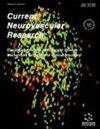预测接受血管内血栓切除术的急性缺血性脑卒中患者的再通术失败率:白细胞计数与平均血小板体积比的作用
IF 1.7
4区 医学
Q3 CLINICAL NEUROLOGY
引用次数: 0
摘要
背景约有一半的 AIS 患者即使在完全再灌注后仍会出现不良预后。白细胞(WBC)计数与平均血小板体积(MPV)比值(WMR)可能是预测无效再通畅的一个有希望的因素。本研究旨在确定 WMR 在识别无效再通风险较高的患者方面的预测价值。方法在这项回顾性队列研究中,分析对象包括 296 名在血管内治疗 (EVT) 后实现完全再灌注的患者。入院时收集了白细胞计数和MPV。研究采用多变量逻辑回归来检验 WMR 与三个月后功能预后的独立关联。净再分类改进(NRI)和综合辨别改进(IDI)分析用于比较 WMR 预测无效再通畅的准确性。结果与第一四分位数相比,WMR 第四四分位数在 3 个月后出现不利结果的调整后几率为 3.142 (95% CI 1.405- 7.027, P = 0.005)。将 WMR 纳入传统模型可更准确地预测不利预后(NRI 0.250,P = 0.031;IDI 0.022,P = 0.017)。结论在接受EVT的AIS患者中,入院时WMR升高与无效再通有独立关联,可能有助于识别无效再通。本文章由计算机程序翻译,如有差异,请以英文原文为准。
Predicting Futile Recanalization in Acute Ischemic Stroke Patients Undergoing Endovascular Thrombectomy: The Role of White Blood Cell Count to Mean Platelet Volume Ratio
Background:: Approximately half of AIS patients have an unfavorable outcome even after complete reperfusion. White blood cell (WBC) count to mean platelet volume (MPV) ratio (WMR) may be a promising predictive factor for futile recanalization. This study aimed to determine the predictive value of WMR in identifying individuals at higher risk of futile recanalization. Methods:: In this retrospective cohort study, 296 patients who achieved complete reperfusion after endovascular treatment (EVT) were included in the analysis. WBC count and MPV were collected at admission. Multivariable logistic regression was used to examine the independent association of the WMR with functional outcomes at three months. Net reclassification improvement (NRI) and integrated discrimination improvement (IDI) analyses were used to compare the accuracy of WMR for predicting futile recanalization. Results:: The adjusted odds ratios for the fourth quartile of WMR were 3.142 (95% CI 1.405- 7.027, P = 0.005) for unfavorable outcomes at 3 months in comparison with the first quartile. The inclusion of WMR in the traditional model enabled a more accurate prediction of unfavorable outcomes (NRI 0.250, P = 0.031; IDI 0.022, P = 0.017). Conclusion:: Elevated WMR at admission was independently associated with futile recanalization among AIS patients who received EVT and might be useful in identifying futile recanalization.
求助全文
通过发布文献求助,成功后即可免费获取论文全文。
去求助
来源期刊

Current neurovascular research
医学-临床神经学
CiteScore
3.80
自引率
9.50%
发文量
54
审稿时长
3 months
期刊介绍:
Current Neurovascular Research provides a cross platform for the publication of scientifically rigorous research that addresses disease mechanisms of both neuronal and vascular origins in neuroscience. The journal serves as an international forum publishing novel and original work as well as timely neuroscience research articles, full-length/mini reviews in the disciplines of cell developmental disorders, plasticity, and degeneration that bridges the gap between basic science research and clinical discovery. Current Neurovascular Research emphasizes the elucidation of disease mechanisms, both cellular and molecular, which can impact the development of unique therapeutic strategies for neuronal and vascular disorders.
 求助内容:
求助内容: 应助结果提醒方式:
应助结果提醒方式:


